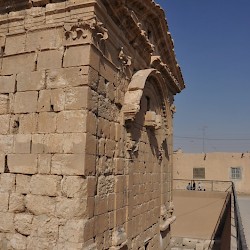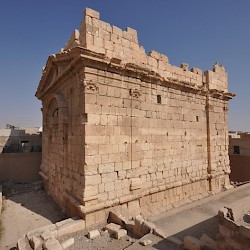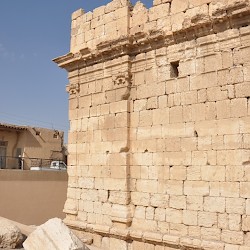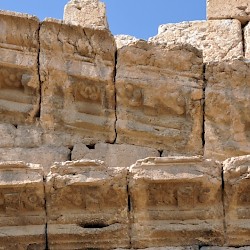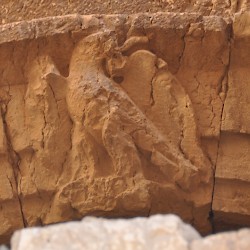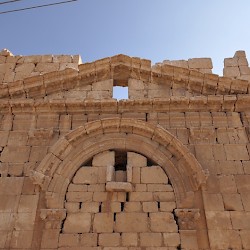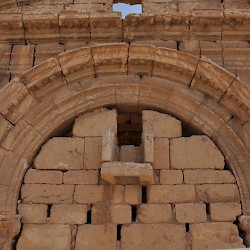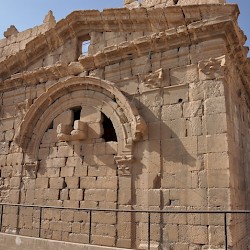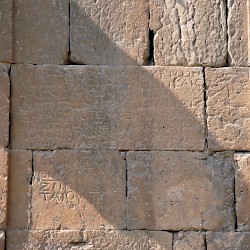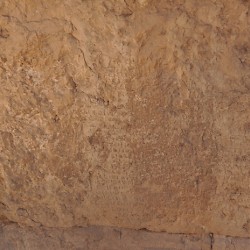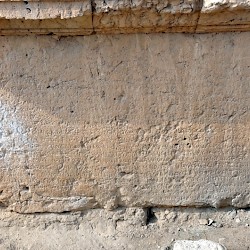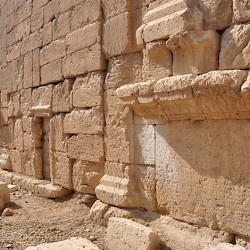Thelsae (Dumeir)
Q345253Thelsae: Roman town in Syria, best known for its perfectly preserved temple (modern Dmeir, ad-Dumayr, Dumeir, etc.).
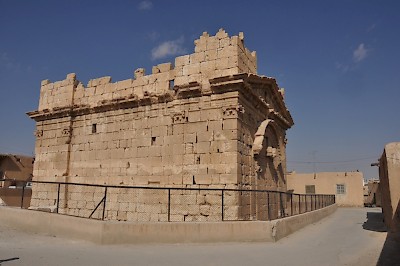
Thelsae is situated some forty kilometers northeast of Damascus, along one of the roads to Palmyra. Although this is today the main road connecting the two cities, in ancient times, the main connection appears to have been more to the north, as indicated on the Peutinger Map. The town was at the eastern edge of the Ghuta, the fertile valley of Damascus. This was the last place where a traveler could find water. As could be expected, there was a sanctuary, devoted to the deity that protected a source. His or her name may have been Aeichala, who is mentioned in an inscription.note
The Romans garrisoned the town; the fort was four kilometers down the road leading from the temple to the east. In the mid-second century CE, it was guarded by the First Flavian Squadron of Chalcidian Mounted Archers.note An inscription from the reign of Valerian (r.253-260) documents another unit, but the name is damaged: only the letters Epuo can be discerned.note
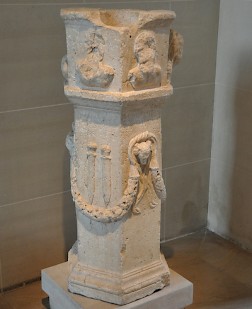
An interesting altar, now in the Louvre in Paris, offers a lot of information about the people. Its hexagonal shape betrays Roman influence, but the inscription is in Nabataean, a language related to Arabic. It informs us that the local mayor was called "general" and that family relations were quite complex: the altar is erected by one Hani'u, freedman of a lady named Gadilu, daughter of Bagrat and mother of two sons, who were adopted by her second husband, Abdmaniku the General. One these sons, Adramu, became General as well. (The other son was called Nakidu.) Interestingly, the Seleucid Era is called the Roman Era and equated to the regnal years of king Rabbel II of Petra, indicating the double identity of the people of Thelsae.
Although the deity Aeichala is not well-known, the unusual building itself, essentially a monument with two gates, is perfectly preserved. It must have started as an enclosure surrounding a well. In the Roman age, a water conduit was added; an inscription, now in the Institut du Monde Arabe in Paris, documents that in the year 94, construction work took place. In this text, the deity is identified as Ba'al Šamem, the "lord of heavens". Later, the god was called Zeus Hypsistos, the Greek name of Ba'al Šamem.
In its present state, with walls standing seventeen meter high, the monument dates to the reign of Philip the Arab (r.244-249), who was born in the nearby Hauran region. Corner towers and staircases prove that rituals were performed on the roof, as was customary in Syria.
In the Arab period, the building was converted to a fort, the gates being filled with stones.
